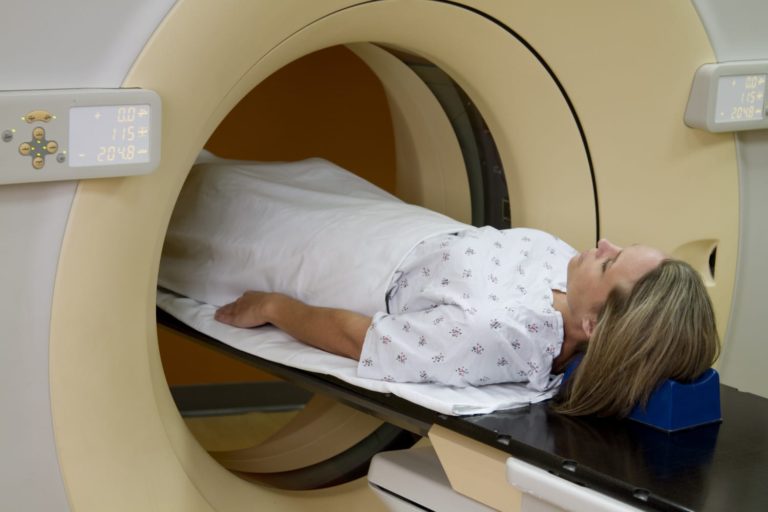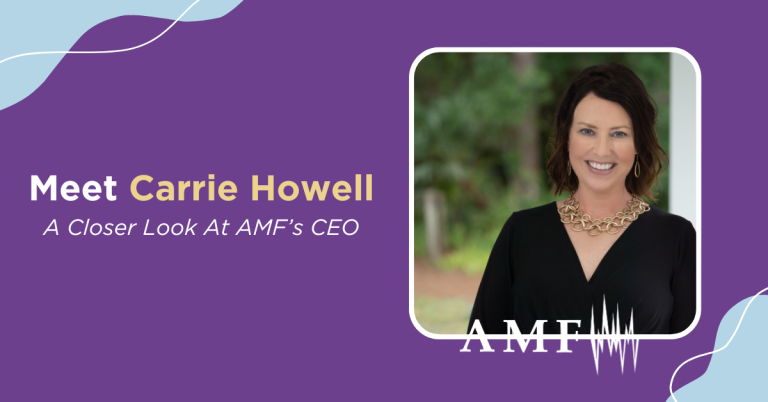Key Points:
- The best outcomes of care result from sticking to your plan through excellent communication with a provider.
- Reviewing triggers and learning how to manage them improves chances of successfully managing migraine and minimizing attacks.
- Top migraine attack triggers include changes in sleep and exercise, high levels of unmanaged stress, and irregular or unbalanced meals.
Adherence: What is it and why does it matter?
“Adherence” and “compliance” are terms that are used to refer to a patient’s role in their own medical care. “Compliance” refers to the degree to which patients follow the medical recommendations of their health care providers (HCP). “Adherence” is a preferable term in headache care because it refers to collaboration between the patient and their HCP.
The key to a successful migraine treatment plan is clear, consistent communication between the patient and their HCP. Patients must be able to voice their needs and concerns when discussing a migraine management plan and know that their HCP is open to adjusting their treatment plan if necessary. This collaborative approach ensures that the patient plays a vital role in their headache management and has the confidence and autonomy to implement the advice, preventive and acute treatments, and other strategies discussed with their HCP when and how they need. It also increases the chances the patient will adhere to their treatment plan, since they have had an active part in developing it with their HCP.
Adherence to Medication vs. Behavioral Treatment
Effective headache treatment can include both pharmacological (medication) and nonpharmacological (behavioral/lifestyle) components.
Adherence challenges in pharmacological treatment may include misuse of medication, including unfilled, overused, underused, incorrectly used, and unadvised discontinuation of prescribed medications. Some of these behaviors can have severe consequences. For example, overusing medication can lead to a medication overuse headache, formerly known as a “rebound headache.” Combining medications without the guidance of a headache specialist can lead to dangerous drug interactions and side effects. Taking medications too early (before pain and other disabling symptoms start) or too late in the timeline of a migraine attack can limit their effectiveness.
Adhering to the behavioral and lifestyle components of a migraine management plan can be even more challenging than following a medication regimen — and yet there is strong evidence that certain lifestyle changes can be very effective in treating migraine. You can discuss the specific lifestyle changes and behavioral treatment strategies that are right for you with your HCP, but the SEEDS model offers a good starting point.
SEEDS is a helpful way to remember some basic lifestyle changes that can help you reduce the chances of a migraine attack:
- Sleep – Practicing proper sleep hygiene and keeping a consistent sleep schedule is important for preparing your body to manage stress and other factors in daily life that can increase your risk of a migraine attack. Here, adherence to your management plan may simply be getting to bed and waking up at consistent times each day.
- Exercise – Exercising regularly can help reduce the frequency and severity of migraine attacks. Adhering to an exercise routine may involve following a set weekly workout schedule or even just getting a certain amount of mild to moderate activity across the course of each week.
- Eat – Drinking enough water and maintaining a balanced diet are both incredibly important for people living with migraine. This doesn’t mean adhering to a strict “diet,” but rather making sure to hydrate regularly and making sure you’re eating several healthy meals throughout the day while avoiding any foods that can increase your risk of an attack. You may also benefit from reducing or eliminating caffeine.
- Diary – Keeping a headache calendar or diary that documents your attacks, eating and sleeping habits, and other important details throughout the month can help you and your HCP identify patterns in your migraine symptoms and adjust your treatment plan accordingly.
- Stress – Regulating stress is a critical part of managing migraine, and yet this may be the most difficult lifestyle change to adhere to, since the factors causing you stress are often out of your control. Talk to your doctor about how to consistently practice stress management and ways you can incorporate relaxation techniques into your daily life. These are some of the most significant lifestyle changes you can make to minimize your risk of attacks.
Motivation and Behavioral Change
The psychologist Albert Bandura developed social learning theory to help explain human behavior and change. The theory states that there are two vital components to successful behavioral change: self-efficacy (the confidence in one’s ability to perform an action) and outcome efficacy (the belief that a behavior or a set of behaviors will have a desirable result).
Therefore, in order to accomplish a goal, one must both want to change and have the knowledge and tools necessary to make the change. Behavioral change and achieving goals can occur in small steps.
One theory of behavioral change proposes that change can be broken down into five stages:
- Precontemplation – The patient is not thinking about changing behavior and does not yet recognize a problem or the need for change.
- Contemplation – The patient recognizes the problem and begins to think about changing behavior. They may start developing a plan but have not taken any action.
- Preparation – The patient has done research, developed a plan and may begin making minor changes or taking small actions.
- Action – The patient is actively engaged in behavioral change or new actions.
- Maintenance – The patient is continuing behaviors necessary to maintain changes.
This theory can be applied to many types of behavioral change, including starting an exercise regimen, embracing better sleep hygiene or following a healthy diet. This model helps patients recognize that even small steps are important in reaching a goal and that a “lapse” or “relapse” is not a failure, but rather a step back from which the patient can recover.
Partnership and Communication With Your HCP
Open patient-provider communication is essential for effective migraine management. You and your HCP must work together as a team to manage your headaches and other symptoms. In order to get an accurate diagnosis and develop an effective treatment plan, your doctor will need to know about the frequency and severity of your headaches, triggers, associated symptoms and how they affect your life, as well as any other contributing factors like stress or sleeping habits.
This may start with keeping a headache journal (or diary) to share with your HCP. You should collaborate with your HCP to create a headache management plan that may include both prevention (reducing the current frequency of attacks) and acute treatment (a plan for what to do when an attack does occur).
This plan may include lifestyle changes or behavioral techniques you can learn with a professional or on your own as well as other non-medication and medication strategies. You and your doctor may need to try many different treatment options before you discover what works best for you. This plan should be evaluated regularly and may be updated as needed.
(Learn more about how to talk to your doctor about migraine and find advice on preparing for your appointment with your HCP.)
What can you do to manage your headaches?
The most important things you can do to control your headaches are:
- Communicate openly with your HCP about how migraine attacks affect your life.
- Identify your personal triggers and work with your HCP on strategies to reduce and avoid them.
- Control common triggers by maintaining a healthy lifestyle of regular sleep, exercise and a healthy diet.
- Learn and practice relaxation and stress management techniques.
- Take supplements and medications as prescribed and discuss any questions, concerns or side effects with your HCP.
- Adhere to the decisions you and your HCP make about your migraine management plan.
- Seek professional help if necessary.
What are migraine triggers?
Migraine triggers are factors that may lead to an attack or make it more likely for you to have an attack. It is important to note that in some cases, things people believe to be triggers are actually symptoms of the prodrome phase of a migraine attack. For example, some people may experience neck stiffness or specific food cravings as very early symptoms of a migraine attack, but then later associate these things with the more painful symptoms of an attack and come to believe that they caused their headache.
In these cases, unavoidable symptoms of a migraine attack are mistaken for avoidable “triggers,” which creates stress and the unfair sense that a patient is to blame for the attack. It’s important to look for potential triggers and discuss these with your doctor, but remember, not everyone has triggers, and often migraine attacks are spontaneous and unavoidable.
How to Look for Migraine Triggers
Migraine triggers vary for each individual, so the best way to identify your possible triggers is to keep a migraine journal. Record when you have headaches or other symptoms as well as what you eat and drink, when you sleep, your hormonal cycle (for women), medications taken, factors in the environment, weather and any other changes that may impact your ability to manage your migraine disease.
Keeping a headache diary for one to two months helps you and your HCP identify any triggers to avoid or patterns you may be able to change to improve your symptoms and reduce the likelihood of attacks.
Some of the most common headache triggers include:
Diet and Nutrition
Eating appropriate portions of healthy foods and maintaining a healthy weight are all very important habits for people who suffer from migraine and other headache disorders. There is no one specific type of diet that has been proven effective for all people with migraine, so you should work with your HCP to find nutritional habits that are right for you.
It is very important that you eat a well-balanced diet with meals scheduled on a regular basis throughout the day (including breakfast, ideally with high protein). Be sure to include healthy choices such as fresh fruits and vegetables, lean meats, poultry and fish, other sources of protein and whole grains. Whenever possible, choose fresh foods to avoid chemicals in overly processed or preserved foods, which may trigger attacks for some people. Skipping a meal, waiting too long to eat or becoming dehydrated can also trigger a headache. Caffeine and alcohol overuse or withdrawal can also trigger migraine attacks.
Additionally, some people think that certain cheeses, chocolate, red wine, tea and coffee, and other foods may trigger their headaches. While certain foods may be triggers for some, others may simply have specific food cravings as part of the prodrome phase of an attack. Track all meals and snacks in your migraine journal so you can talk over any possible triggers with your HCP.
Sleep
It is especially important for people with migraine to maintain a healthy and regular sleep cycle. Most people feel that seven to eight hours a night is an appropriate amount of sleep for an adult, but you should pay attention to your own body to learn your own sleep needs. It is important to maintain a regular sleep and wake cycle, both during the week and on the weekends, and avoid getting too little or too much sleep. Be aware that getting less than six hours and more than nine hours of sleep has been proven to provoke headache symptoms the next day.
Environmental Factors
Environmental factors such as bright or flickering lights, strong smells like perfume and changes in the weather (including a drop in barometric pressure, which often occurs before a storm) may trigger an attack. You can’t always control all of these factors, but there may be changes you can make in your home and work environments to make them less likely to trigger an attack.
In addition, you may want to keep an eye mask and ear plugs on hand in case of a headache. Many people find that they can help stop a headache if they are able to lie down in a dark, quiet room to sleep or relax.
Psychological and Emotional Factors
Many people who live with migraine report that stressful demands in their life can lead to headaches. While sometimes a headache may come on during moments of incredibly high stress, more often migraine attacks come after the stressful period has passed. These are called “let down” headaches and are due to sudden fluctuations in the body’s stress hormones (like cortisol) triggering an attack.
While it may not be possible to reduce or eliminate the amount of stress in your life, you can learn ways to manage stress, organize your time, learn to say “no” to unrealistic demands, ask for help when necessary and teach your family and friends about the importance of taking care of yourself.
Try to schedule some time each day to relax both your body and mind. You may find that it is helpful to schedule exercise, a walk or a yoga class, or you may be comfortable finding time during the day to do a relaxation exercise such as deep breathing or visual imagery. This is as easy as imagining you are sitting on a beautiful, tropical beach while you are sitting at your desk.
Hormonal Factors (for Women)
Many women find that their attacks frequently occur during certain points in their menstrual cycle — often just before or at the beginning of their menstrual flow. You may want to keep a headache diary and note the timing of your headaches each month. If you find that they are related to your menstrual cycle, talk to your HCP about treatment options. Additionally, you should be aware that maintaining a regular and healthy lifestyle including proper diet, sleep, exercise, stress management and relaxation will be particularly important for you during this time each month.
Pregnancy is a unique time for women with migraine and headache disorders. Many women find that they experience headaches early in their pregnancy but feel much better as the pregnancy progresses. If you are pregnant or considering becoming pregnant, it is very important to communicate this to your provider. Many headache medications can harm a developing fetus, and your HCP can help provide the best care for you and your baby.
Lifestyle
You may find that factors such as intense exercise or long-distance travel, especially across time zones, trigger your attacks. You may also find other factors both at home and in the workplace that trigger your headaches. While it may not be possible to eliminate or avoid these triggers, try to be aware of any major stress factors in your lifestyle when making plans or major decisions in order to manage stress levels. It may be helpful to review possible stressors in specific areas of your life — for example, occupational or academic, family, social, financial and personal.
What is relaxation training and stress management?
When you are tense, your body turns on the sympathetic nervous system or “flight or fight” response. This state makes you more vulnerable to a headache.The goal of relaxation training is to learn how to activate the parasympathetic nervous system’s “relaxation response.” The “relaxation response” is defined as your body’s ability to release chemicals and regulate brain signals that make your muscles and organs slow down and increase blood flow to the brain.
While some medications have this effect, they may also have unwanted side effects. You can train your body and brain to relax just as well without drugs while remaining conscious and aware at the same time. There are several ways to achieve this state, including diaphragmatic (deep) breathing, visual imagery, progressive muscle relaxation and other techniques you can practice on your own. These techniques can activate your relaxation response and slow your heart rate, increase circulation (which you can feel through warmth in your hands and feet), lower your metabolic rate and relieve muscle tension.
Behavioral headache management is most successful when you identify triggers and create a plan to avoid or reduce them, practice relaxation and stress management, and adhere to the plan you have created with your HCP.
You will find that some triggers are impossible to eliminate or avoid. However, you may be able to make some changes in your lifestyle that help manage your migraine symptoms, including eating nutritious meals on a regular schedule, getting regular exercise, maintaining a regular sleep pattern and using techniques to manage stress. You can also use relaxation techniques to help avoid headaches or reduce the pain and duration of a headache once it has started.
Most importantly, adhere to the plan you create with your HCP to give it sufficient time to work and for any lifestyle changes to become habit. You may also benefit from guidance and assistance from a professional in making healthy lifestyle changes, managing stress and incorporating relaxation techniques into your life.
Dawn C. Buse, PhD. Director of Psychology, Albert Einstein College of Medicine, Bronx, NY.
Reviewed and updated by A. Laine Green, MD, FAHS, MSc, FCRPC, Mayo Clinic in Arizona
Reviewed for accuracy by the American Migraine Foundation’s subject matter experts, headache specialists and medical advisers with deep knowledge and training in headache medicine. Click here to read about our Editorial Board members.









































































